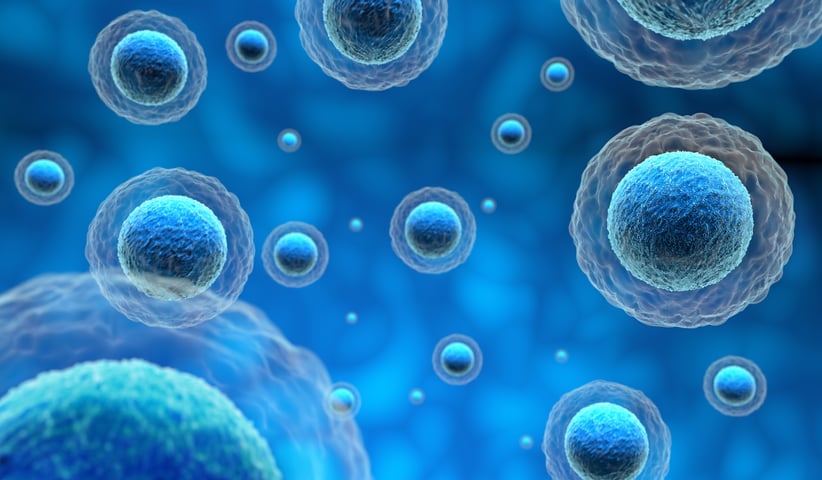
Biosensing platforms based on extracellular vesicles are currently receiving a lot of attention. The reason is that extracellular vesicles, which are endocytic lipid-membrane bound bodies, have the potential to be used as biomarkers in cancer and neurodegenerative disease and can be easily accessed via non-invasive liquid biopsies.
In my research group we focus on fundamental questions related to how materials form and interact on the nanoscale with the overall ambition to develop novel methodologies supporting healthcare and the environment. Typically, we explore design strategies based on molecular self-assembly of polymers, nanoparticles, and biomolecules. Biosensing platforms, which could be used for sensitive detection of analytes enabling disease diagnosis, are an important area for us. In this context we explore novel biosensor architectures as well as different strategies to increase biosensor sensitivity and specificity.
The QCM-D analysis enabled us to monitor the surface immobilization of the nanoparticles, as well as the subsequent uptake and release of binding partners.[1] Using the QCM-D data, we could also model the binding kinetics of the respective nanoparticle - analyte couples, and determine important binding parameters, such as the association and dissociation rate constants (kon and koff) and apparent binding constant Ka.
Recently, we developed an approach for stepwise surface functionalization of biosensing surfaces with a particular focus on extracellular vesicles. The build-up of the surface architecture and performance was characterized by QCM-D and EQCM-D analysis.[2,3] As an example, with the ambition to enhance the sensitivity of the platform, we investigated a 2D and 3D nanostructuring of the QCM-D electrode.[4,5]
Watch the webinar to learn more about our recent efforts on implementing QCM-D for reliable biosensing.
Compared to QCM, QCM-D measures an additional parameter, and provides more information about the system under study.
Discover how QCM-D analysis reveals real-time etching dynamics, helping optimize cleaning processes and protect surfaces from unwanted damage.
Discover how QSense QCM-D helps tackle fouling challenges across industries
Discover how QCM-D enables real-time, label-free analysis of supported lipid membrane formation, structure, and dynamics for advanced research
Learn how QSense QCM-D analysis can reveal membrane fouling dynamics and optimize cleaning strategies for more efficient water treatment
Learn how QSense QCM-D helps detect and prevent surface-induced instabilities in biologics. Join our webinar for insights and practical examples.
Learn about the top QSense sensors for analyzing biopharmaceutical drug-surface interactions in the context of IV bags.
Learn about QCM-D, Quartz Crystal Microbalance with Dissipation monitoring - an analytical tool for surface interaction studies at the nanoscale.
Explore QSense QCM-D sensors to optimize cleaning efficiency with real-time insights, enhancing formulations and protocols across various conditions.
Dr. Stefan Guldin is a full professor in Chemical Engineering, head of the Adaptive and Responsive Nanomaterials group, and deputy head of department (Enterprise) at University College London. His research interests include the study of material formation on the nanoscale by molecular self-assembly, creation of adaptive and responsive materials architectures, and translation into chemo- & biosensing applications.
